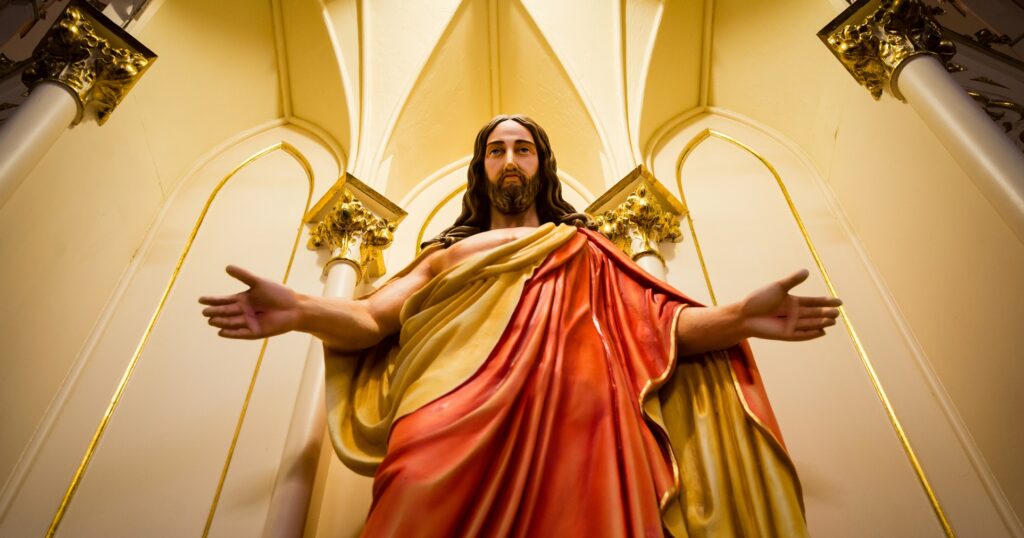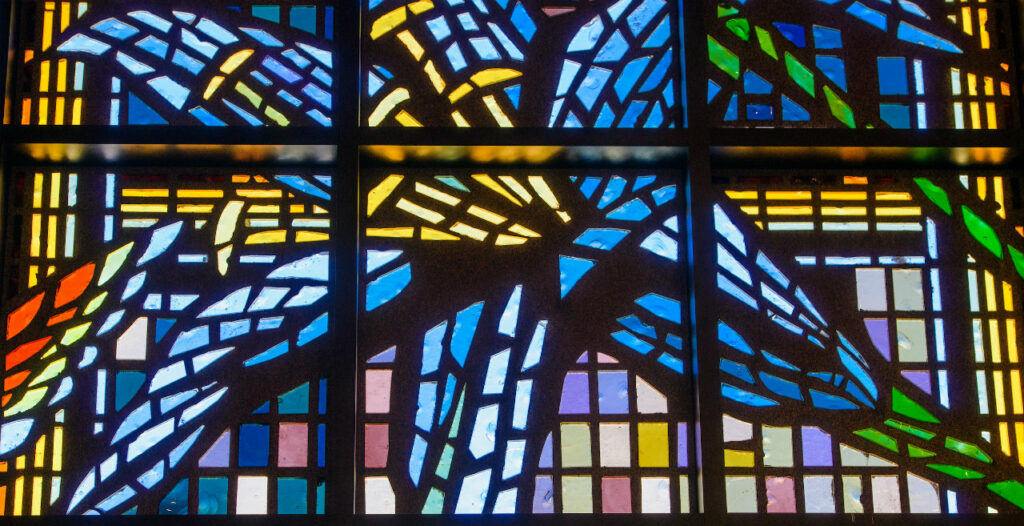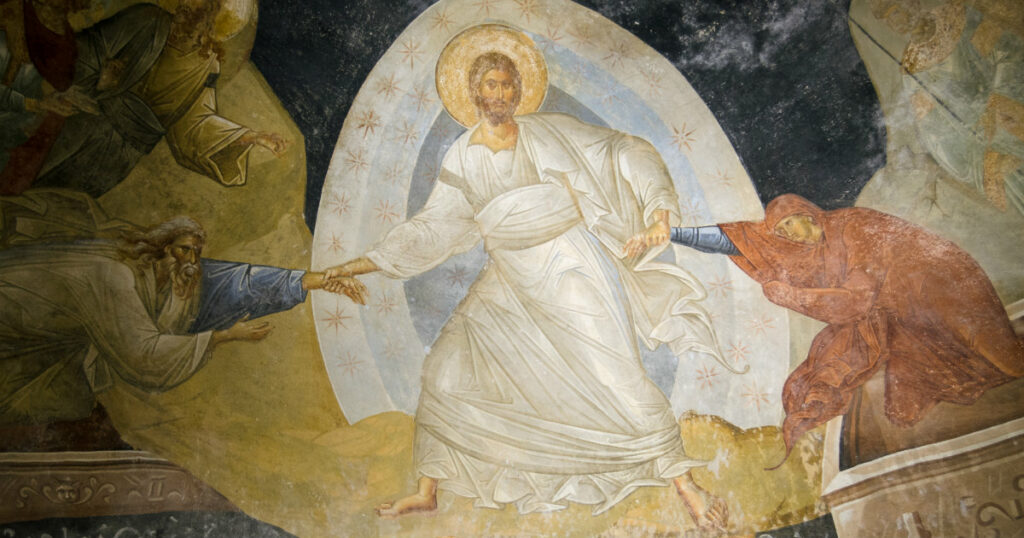By Christopher Seifferlein
One Sunday morning, my young daughter sat in the pew. “Please keep your clip in your hair!” my wife said firmly to her in the middle of the service. “But mom,” she said, glancing to the statue of Jesus in front of the congregation, “Jesus isn’t wearing a clip in His hair!”
Statues are not common in congregations of The Lutheran Church—Missouri Synod (LCMS). Synod lore says that the liturgical finery sunk on the Amelia, the one ship that was lost at sea on the journey over from Saxony. Lutheran immigrant populations had limited funds and recalled the misuse of images throughout church history, and so statues did not top the list of things to include in a new church building with one important exception: the “Jesus statue” seen above the altar in many of our churches. The statue my daughter was looking at has been in the congregation for a century.
The Jesus of this representation, however, was not from any ordinary moment of Jesus’ life. It portrays our ascending Lord. His hands are raised in blessing (Luke 24:50). His feet are planted on the orb, showing His ever-present rule over us. Our forebearers wished for us to keep central to our hearts the importance of the message of the ascension as it had first been passed down to them. They, too, spoke the Creed that climaxed with this statement about Jesus’ life: “He ascended into heaven … from thence He will come.”
An ancient feast
Early Christians regarded the Feast of the Ascension as one of the major feasts of the Christian calendar. It was the final of the major festivals celebrating Christ’s life. Ancient Christians celebrated the feast by taking part in celebrations and services in the open air, on a hill or in the countryside. Processions to those places imitated Jesus’ journey with the disciples to the Mount of Olives. They celebrated the Feast of the Ascension with great joy even as the disciples were full of joy after Jesus’ ascension (Luke 24:52). Joy does not seem so obvious after Jesus departed from them, but their hearts were filled with the messages of the ascension.
The ascension message proclaims that Jesus, who left heaven and came to earth, has returned to heaven having completed His mission. The visible presence of the Lord on earth may have ceased, but He does not cease to be with His earthly people in His flesh and blood sharing with them His divine life. His rule over all things has commenced as He sits at God’s right hand on high. Christ, who forevermore lives in human flesh and blood, now reigns at God’s right hand. He went there to prepare a place for us and will return in glory having put all our enemies, last of all death, under His feet.
In the first act of His rule, He sent His Spirit on Pentecost so that the apostles and pastors could be sent to preach His name to all nations, bringing to all people the forgiveness of sins and the gift of eternal life that He won on the cross. The ascension also includes the promise that we will ascend over every sin, death and even hell itself, passing over one day to our glorious rest in heaven. The celebration of this feast works this teaching and joy in us.
In former times, the joy of the feast spanned from Ascension to Pentecost, a 10-day mini season known as Ascensiontide. The color white remains on the altar. Special joyous ascension hymns are sung. The paschal candle may be moved from the altar to its regular place by the baptismal font. Some congregations extinguish the light of this Easter candle after the reading of the Gospel, marking the beginning of the time when we apprehend Christ not by sight but by faith.
Suggestions
Ascension Day services fall on a Thursday, and therefore many people neglect to attend the feast. This is strange since we do not miss Christmas services that normally fall during the week. Perhaps we neglect Ascension Day because we have failed to instill its teaching in our lives.
Some ideas for recovering this feast day might include:
- Learning an ascension hymn in the home.
- The local Amish community ceases from work and spends the day with their extended community. Why not take the day off and go to church at the end of the day?
- Have the children or adult choir sing for the service.
- Have the service on a hill or in the church cemetery, processing to the location with the cross leading the way, recreating Jesus’ journey with His disciples to the Mount of Olives.
- Add to your weekly prayers a petition for “the joy of the ascension among us.”
- Do a Bible class on the ascension and include a synopsis of it in your congregation’s newsletter.
- Encourage your pastor to celebrate the ascension on Ascension Day. | Have a joint worship service with other circuit congregations.
- Schedule a potluck before the service or an ice cream social afterward.
- Have the pastor speak one final “Christ is risen!” from the balcony or the church steeple or on a hill outside the church.
In recent times, the Roman Catholic Church in America has almost given up celebrating the Feast of the Ascension on a Thursday, and instead transferred it to the following Sunday. Instead of following the path of least resistance, recognize that it has taken generations to lose this great feast in our congregations; its recovery will not happen overnight. Even if our church is not full of people on earth for an Ascension Day service, we rejoice that we worship our ascended and triumphant Lord with angels and archangels and all the saints of heaven. If all the company of heaven is there, then even in the smallest of churches, the attendance is without number.
This article originally appeared in the May 2022 issue of The Lutheran Witness.






“One person esteems one day as better than another, while another esteems all days alike. Each one should be fully convinced in his own mind.” Romans 14:5 ESV